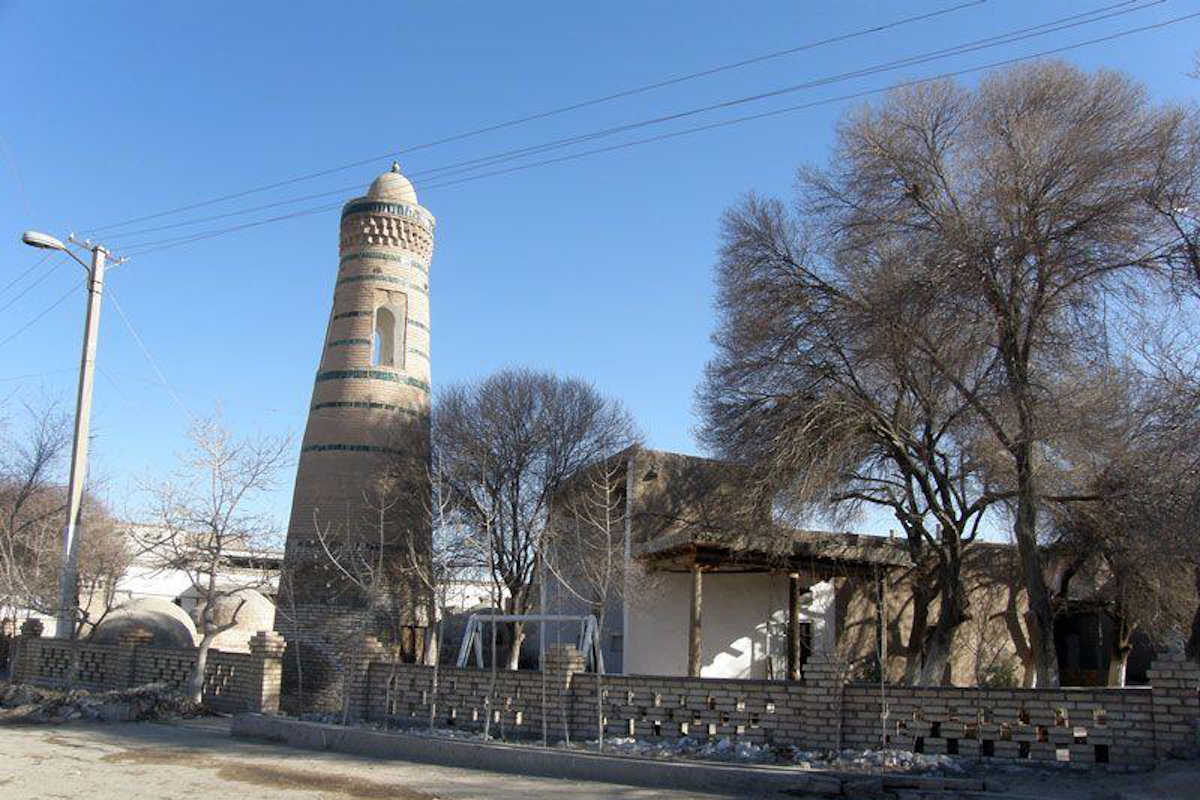Khiva - Minaret Abdal Bobo
The minaret Abdal-Bobo in Khiva is small (height – about 10 m, base diameter – 3, 2 m), but impressive, with sharply decreasing diameter upwards a plump trunk crowned with an elegant cornice – Sharafa.

On the road to Koy-Darwaza is an architectural complex Abdal-Bobo, built around a small suburban cemetery. Here, on the banks of the Khauz, by a large mosque in the neighbourhood, slave trade was carried out.
The 18th century Abdal-Bobo minaret, is located on Ataeva Street in Dishan-Kala of Khiva. It was built as part of the ensemble of the same name after the death of Pahlavan Ahmad Zamchi (his real name Abdal-Bobo).
Dishan-Kala is the name of the historic “outer” city of Khiva. The traditional division of the city into two separate parts: an inner city (Shahristan) – Ichan Kala (literally: inner circle of defence) and an outer city (Rabad) – Dishan Kala (outer circle of defence). Unlike Ichan-Kala, which has almost completely preserved its outer appearance, only a few gates of the outer defensive walls remain, notably the Kozh-Darwasa gate, 500 metres from the northern gate of Ichan-Kala (Bagcha-Darwasa), as well as the Khazarasp-Darwasa and Gandimyan-Darwasa gates. Allakuli-khan built the outer rampart in 1842 to protect against attacks by the Yomuds (one of the Turkmen tribes).
According to the poet and translator Agahi, Allakuli-khan built the Dishan-Kala walls in 3 years and forced all his subordinates to work for free for 12 days a year. More than 200 thousand people participated in the construction of the wall. The dimensions of the outer wall were as follows: Length – 5650 m, height – 6-8 metres, thickness at the base – 4-6 metres. It is interesting to know where so much clay was taken from to build the walls. Research revealed that the clay was extracted two kilometres north of the city, on the territory called Govuk-kul; now there is a large lake there. And even today, the local clay of excellent quality is used by modern potters. Legend has it that clay from this area was used when the Prophet Muhammad built Medina, and the lake that was later created is considered sacred.
